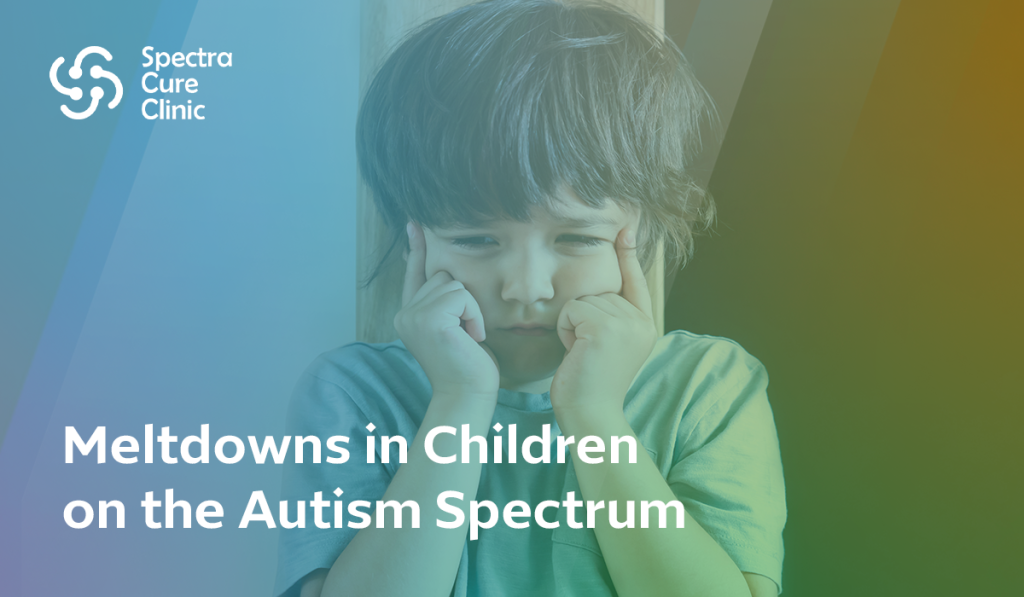
Meltdowns in Children on the Autism Spectrum: Understanding, Managing, and Supporting
For many children on the autism spectrum, navigating daily life can be overwhelming. Changes in routine, sensory overload, or difficulties in communication can sometimes lead to intense emotional outbursts known as meltdowns. Unlike typical temper tantrums, meltdowns are not a child’s way of seeking attention or control—they are involuntary reactions to overwhelming stimuli.
As medical professionals, understanding the nature of meltdowns and implementing effective strategies to support autistic children can make a world of difference.
What Causes Meltdowns in Autistic Children?
Meltdowns are triggered by an overload of sensory, emotional, or cognitive stimuli. Some of the most common triggers include:
- Sensory Overload – Loud noises, bright lights, strong smells, or unfamiliar textures can overwhelm a child’s nervous system.
- Changes in Routine – Many autistic children find comfort in predictability. Unexpected changes can lead to distress.
- Communication Barriers – Difficulty expressing needs, feelings, or frustrations can result in emotional overload.
- Emotional Dysregulation – Many autistic children struggle with self-regulation, making it difficult to calm down once they become overwhelmed.
- Fatigue or Hunger – Physical discomfort can heighten stress and lower a child’s ability to cope.
How to Manage and Prevent Meltdowns
While meltdowns cannot always be avoided, caregivers and medical professionals can take proactive steps to reduce their frequency and intensity.
1. Recognize Early Signs
Understanding a child’s unique triggers and warning signs—such as fidgeting, covering ears, or withdrawing—can help intervene before a meltdown escalates.
2. Create a Sensory-Friendly Environment
Providing a calm, structured environment can help autistic children feel secure. Strategies include:
- Reducing noise and bright lights.
- Using noise-canceling headphones in loud environments.
- Offering a “safe space” for the child to retreat when feeling overwhelmed.
3. Teach Self-Regulation Techniques
Helping children develop coping strategies can significantly reduce meltdowns. Some effective techniques include:
- Deep Pressure Therapy – Weighted blankets or firm hugs can provide a soothing effect.
- Breathing Exercises – Teaching children to take slow, deep breaths can help them regain control.
- Visual Schedules – Picture-based schedules provide predictability, reducing anxiety.
4. Validate Feelings Without Reinforcing the Behavior
During a meltdown, avoid punishment or reasoning. Instead, use a calm voice and reassure the child. Saying, “I see that you’re upset. I’m here to help,” acknowledges their emotions without escalating the situation.
5. After the Meltdown: Reflect and Reassure
Once the child is calm, reflect on what triggered the meltdown. Help them identify alternative coping strategies for the future. Provide positive reinforcement when they successfully manage their emotions.
How Spectra Cure Clinic Can Help
At Spectra Cure Clinic in Egypt and Dubai, we specialize in providing evidence-based therapies to support children with autism and their families. Our team of specialists offers:
- Sensory Integration Therapy to help children process sensory information more effectively.
- Behavioral Therapy to develop coping strategies and improve emotional regulation.
- Parent Training Programs to empower caregivers with practical techniques for managing meltdowns.
Understanding autism and providing the right support can create a more inclusive world for autistic children. With the right interventions, patience, and professional guidance, meltdowns can be minimized, ensuring a more positive experience for both children and their families.
Post Views: 583

